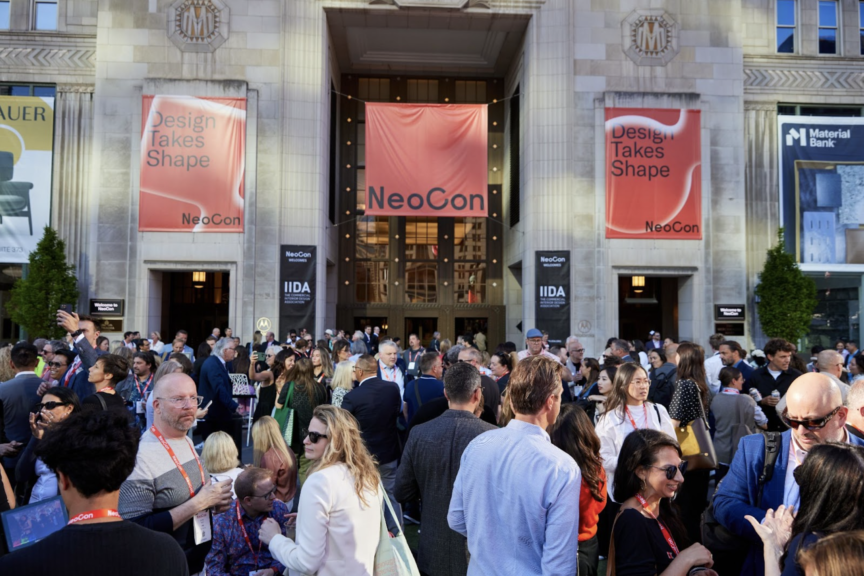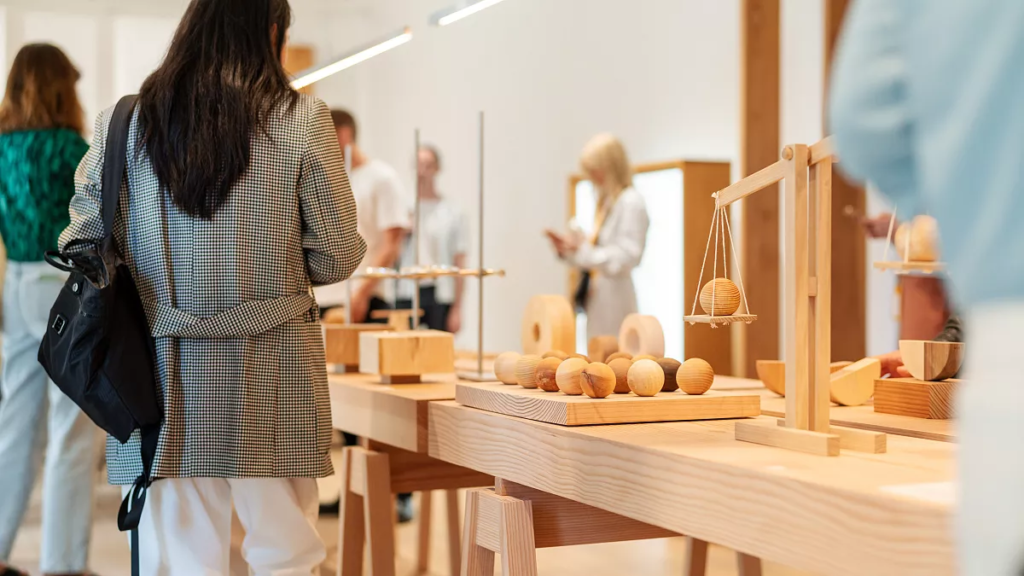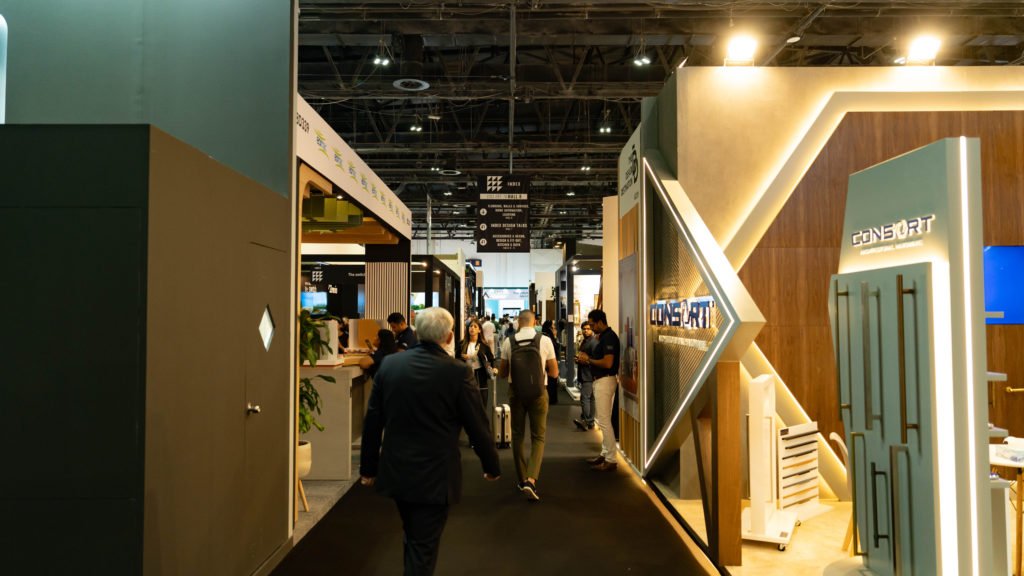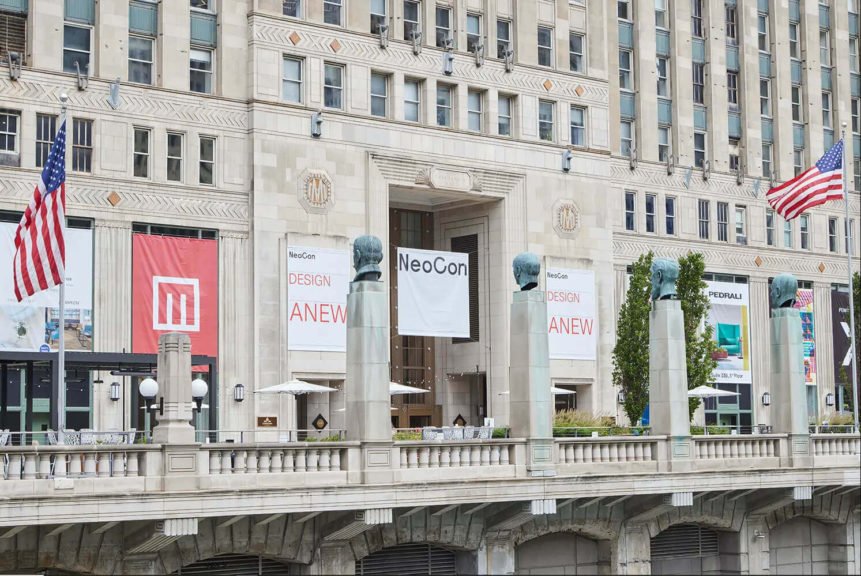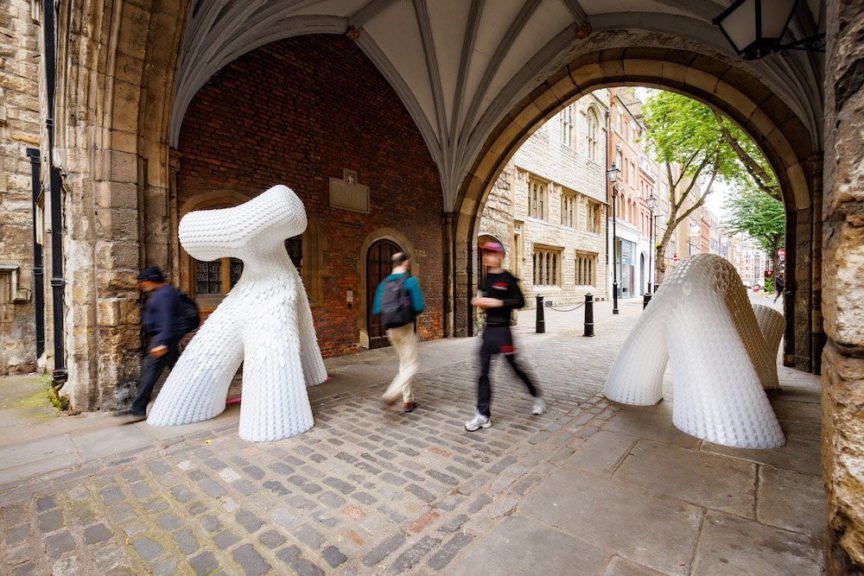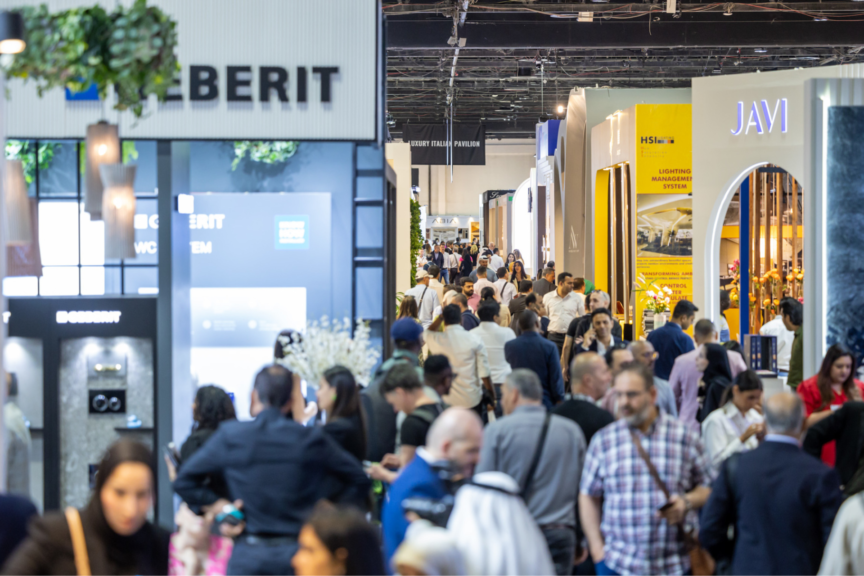Titled, ”GRANDES on Green”, the Spanish breakfast this year began with an insightful discussion. Porcelanosa’s Design Center in d3 hosted reputed names like Laura Bielecki, Associate Director, Interior Design at Nakheel; Marta Gonzalez, Director of Interior Design at Accor; Diane Thorsen, Design Director at Gensler and Mennah Darwish, Design Manager at Select Group. The (incidentally) all-woman panel were set to voice their views on sustainability in the hospitality sector – from design to operations.
Representatives from Actiu, Porcelanosa, iSiMAR, Naxani, and Legado Artesano Castilla-La Mancha were also in attendance. Each of these brands showcased their repertoire at the Interiors from Spain pavilion at Downtown Design. Shortly following the discussion, visitors moved to the venue to get the first glimpse of the stand.
As the talk, moderated by Siddharth Peters, Co-Founder of Love That Design took its course, we stumbled upon impressive perspectives. Here’s what kept us hooked…
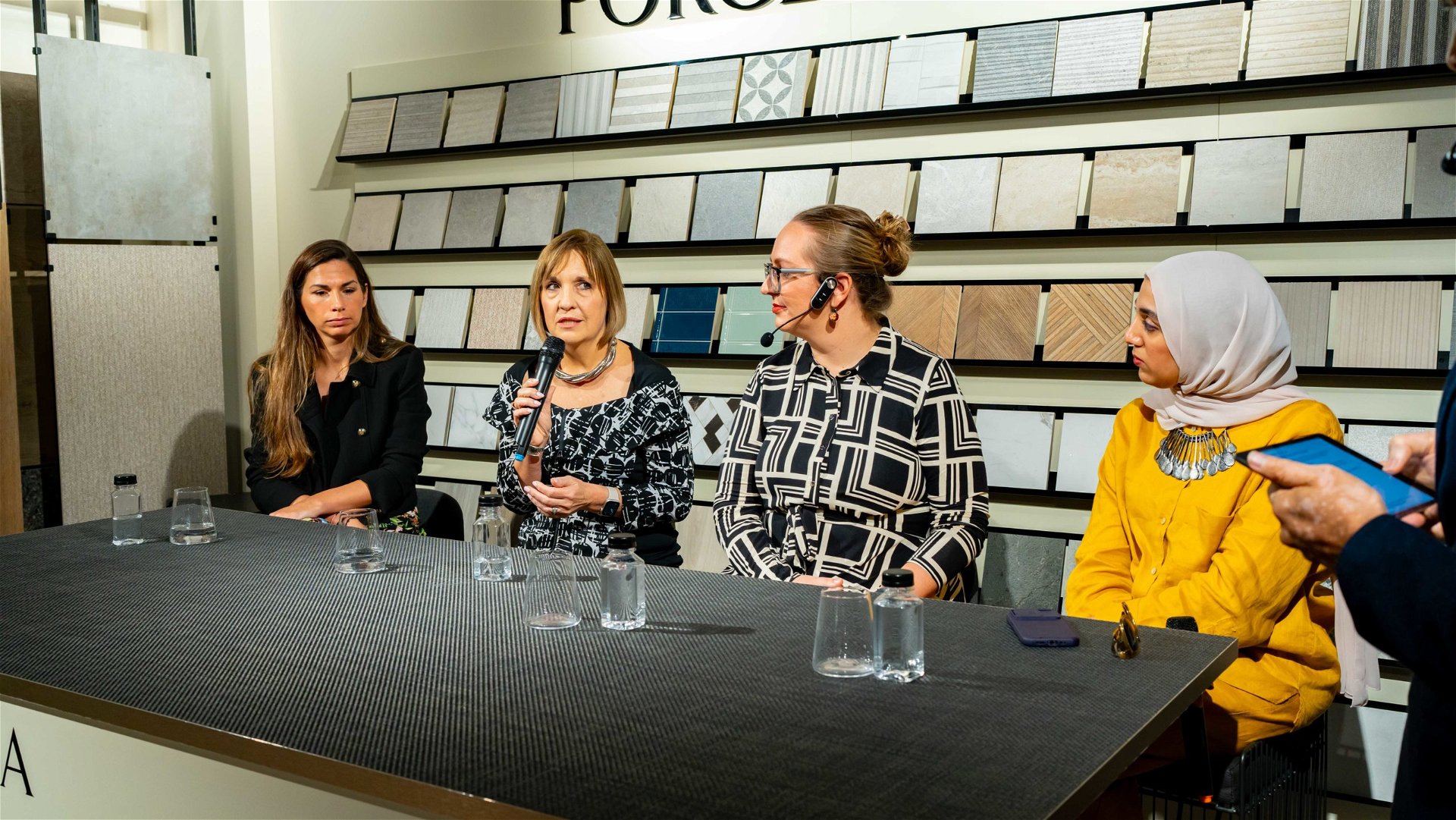
”Where Does Sustainability Make the Most Difference?’‘
The Focus is a Green Hotel
“The master plan”, Laura shot up when the question was floated. “Look at the 2040 master plan, as an example. It’s all about creating 15-minute cities, making things more accessible, getting rid of the traffic and ensuring that our communities aren’t just buildings; they’re connected sets of buildings.”
Marta revealed it is the energy consumption that makes the most impact from an operator’s lens. On the other hand, Diane spoke about carbon footprint and operating costs as equal focuses in the design stage.
Sustainability in Hospitality
A ”Material” Game?
With COP28 headlining the city’s agenda in the past year, it is tough to weed sustainability out of the details. Although a substantial number of conglomerates have taken a more conscious approach and were targeting sustainability, the event has nudged an added urgency to matters.
Mennah explained that her tryst as a design manager is currently to prove that sustainable solutions do not always have to cost a fortune. She understands that reducing profit margins can demotivate and strives to change incorrect perceptions. “We try to use local materials, but there is a misconception. It is thought to be lower quality, but that is not the truth,” she iterated.
At the same time, Diane pointed out a constraint. “In the UAE, we have a long way to go in specifying local products because the certification (for LEED or WELL) of the actual products is costly and requires a lot of investment.” In the same breath, she also agreed that using homegrown products solidifies community ethos and builds indigenous artisanal personality in the space. “It gives the sense of space; it creates the kinds of stories that build itself”, she insisted.
However, not every material or product can be manufactured in one particular region. Imports cannot be avoided, and to Marta, evening out those costs via other measures (such as construction applications or energy consumption) can make up for it. “Working with the products might be easier and less expensive when they are shipped”, she explains.
Diane even gushed about briefs that require designers to play with fewer materials. “When we get a brief to use three materials on a project, I love that! Because you can design and play with so many different things. You can be creative with textures and layering.”
Materials can help reduce the carbon footprint. Diane postulates that for a designer handing over the drawings, the specifications can make or break the outcome. “Developers and contractors who have been in the industry for longer tend to sanction post-contracts, which is added assurance”, she mentions. It not only ensures quality but also the usage of the right, certifications-compliant products.
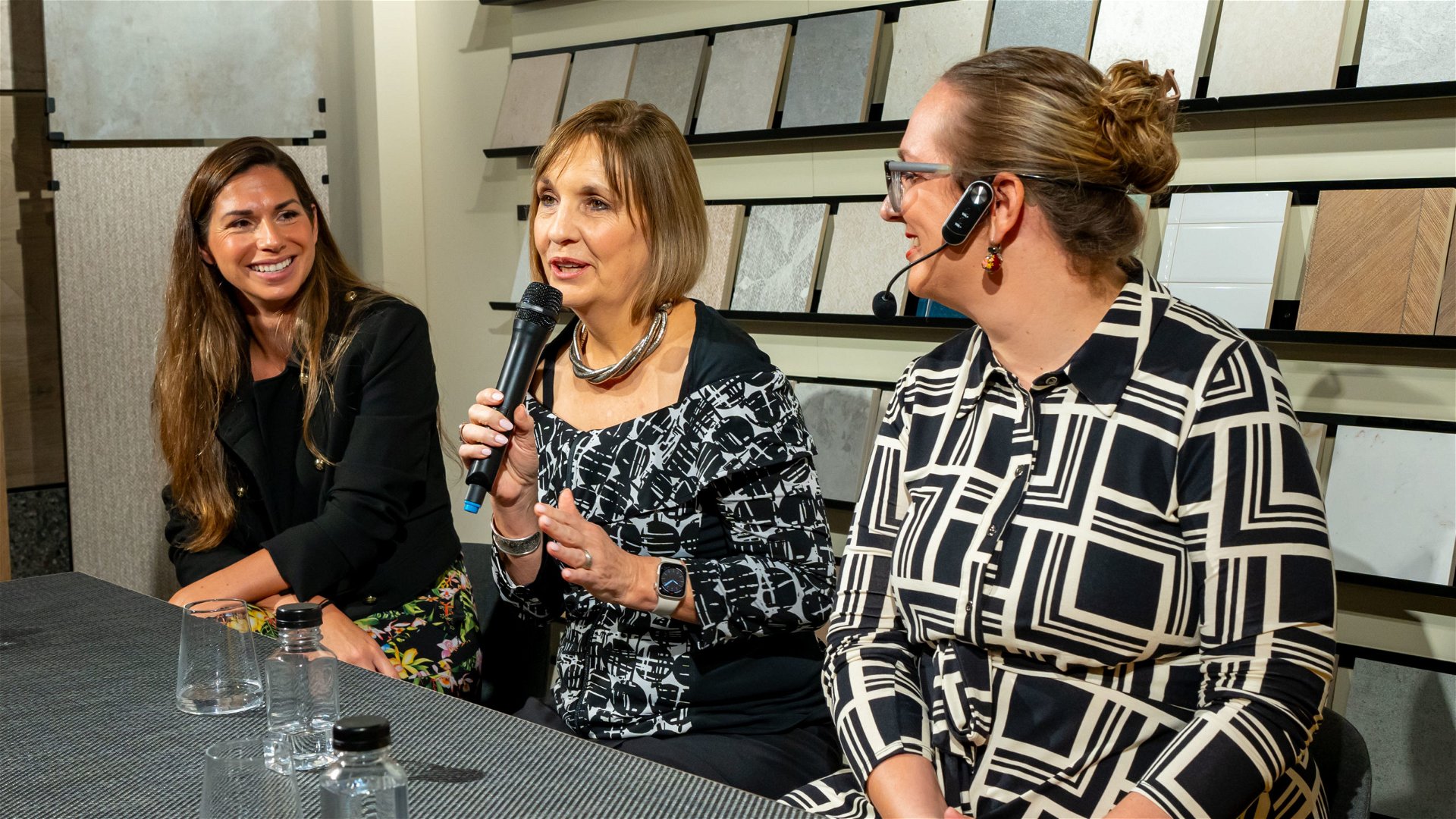
The Role of a Design Manager
Are they necessary to achieve sustainability?
“They are interpreters”, Laura puts succinctly. “Designers speak a different language, and so do the finance and procurement teams. If you interpret correctly, you fill in the gaps and find out where they are. This is key in ensuring the product has the same vision as the beginning.”
In a project, various stakeholders have varied interests. To a LEED consultant, quality is a priority. In contrast, profit margins are of the essence for the developer. The design and concept hold the most weight to a designer and a contractor; time is money. A designer manager, on the other hand, has the client’s and project’s best interests.
Mennah contributes, “When you spearhead it all, you’re taking it from design to execution. We are mediators. It is about moderating all the stress of the industry, making it an ever-evolving role.”
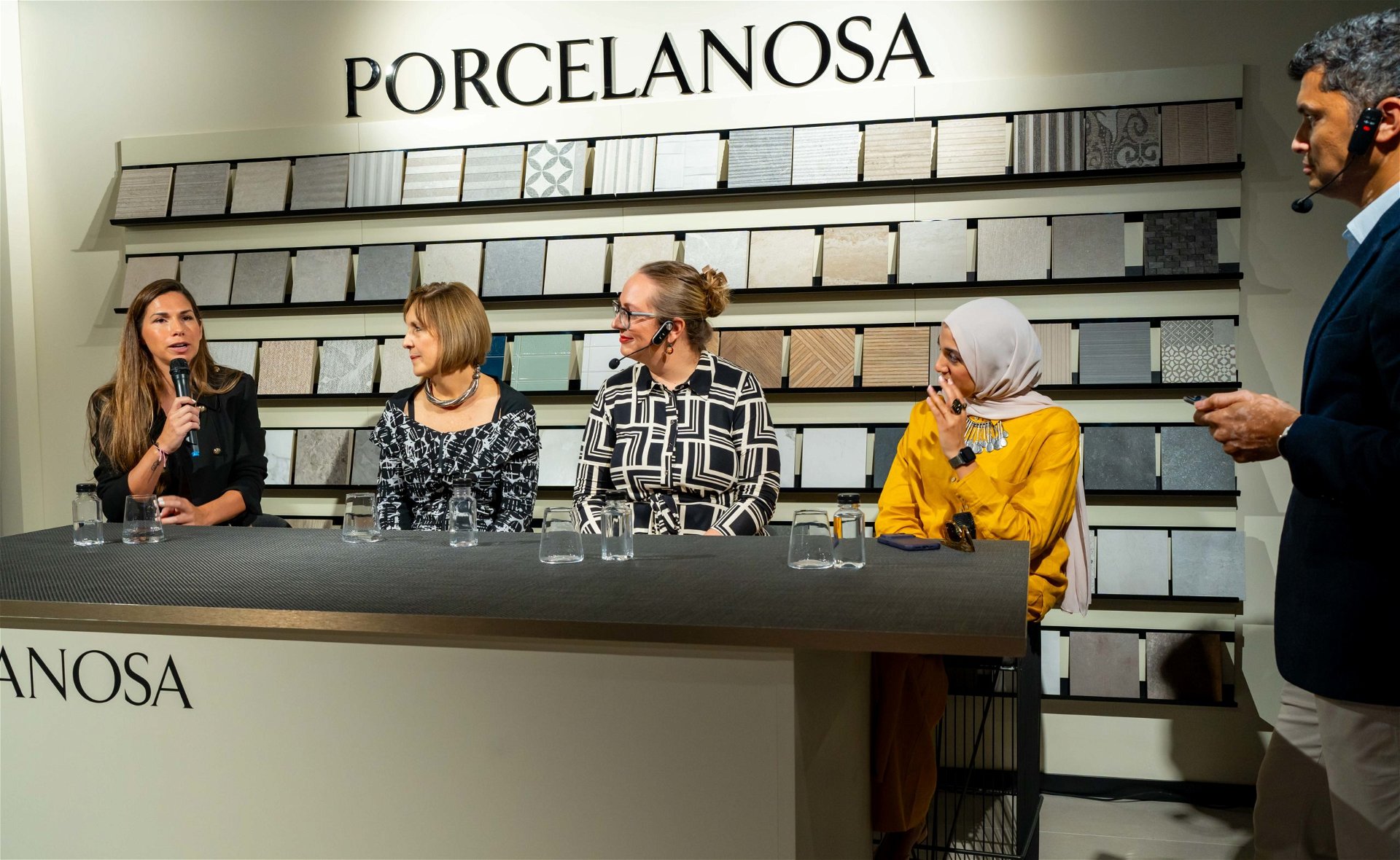
The journey to a sustainable future has begun to look less arduous. With the government introducing mandates such as the Green Building Code and certified projects attracting more revenue, the market is embracing a conscious approach. Believer or non-believer, getting on the sustainability bandwagon is now inevitable.
Article info
Article:
Date added:
30 November, 2023










